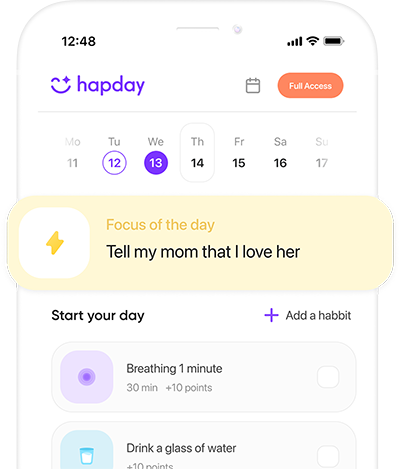Table of Contents
- Understanding ADHD-Induced Burnout
- Identifying the Signs of ADHD-Induced Burnout
- Strategies to Break Free from ADHD-Induced Burnout
- Building Resilience Against ADHD-Induced Burnout
- Conclusion
Understanding ADHD-Induced Burnout
What is ADHD-Induced Burnout?
ADHD-induced burnout—a state of emotional, mental, and sometimes physical exhaustion—arises from the challenging demands of managing ADHD. Where traditional burnout typically links to work-related stress, ADHD burnout pulls from a mélange of chronic stressors: symptom management, societal expectations, and often a mismatch between what one perceives they can do versus actual output.
Primary Symptoms:
- Emotional Exhaustion: Constant feelings of being wrung dry emotionally.
- Cognitive Fatigue: Struggles with concentration, memory, or decision-making.
- Physical Symptoms: The likes of headaches, sleep issues, and unrelenting fatigue.
- Decreased Performance: Uphill battles with maintaining productivity at work or school.
How is it Different from General Burnout?
The uniqueness of ADHD-induced burnout lies in its ties with the neurobiological nuances of ADHD. Research reveals that those with ADHD are more susceptible to burnout, owing to heightened stress sensitivity and lesser coping prowess (Saxbe & Repetti, 2010). Unlike general burnout—which may spring from sheer overwork—ADHD burnout results from a constant tussle to live up to both self-imposed and external expectations.
The Prevalence Among Women
Often slipping under the diagnostic radar, ADHD in women tends more towards inattentive rather than hyperactive symptoms (Hinshaw, 2018). This invisibility cloaks potential ADHD burnout. For women, balanced on multiple roles, chronic stress can spike higher incidences of exhaustion. This trend is noted by the World Health Organization (WHO, 2021).
Identifying the Signs of ADHD-Induced Burnout
Emotional and Psychological Signs
- Heightened Anxiety and Depression: Research in the Journal of Affective Disorders shows a marked link between ADHD and escalated anxiety and depression levels (Kooij et al., 2010).
- Feelings of Inadequacy: A gnawing sensation of falling short of personal or societal standards because of ADHD.
- Irritability and Mood Swings: Emotional upheaval stemming from cognitive overload.
Physical Signs
- Chronic Fatigue: No matter the rest, an enduring weariness exacerbated by the overactive ADHD mind.
- Insomnia or Sleep Disturbances: Wrestling with sleep, thanks to racing thoughts or intense focus.
- Somatic Symptoms: Including headaches, muscle tension, or stomach troubles.
Behavioral Signs
- Procrastination and Avoidance: Mounting struggles in beginning or finishing tasks, deepening guilt and stress.
- Increased Reliance on Stimulants: Leaning more on caffeine or ADHD meds to get through the day.
- Withdrawal from Social Situations: Dodging gatherings due to stress overload or hyperactivity fears.
Strategies to Break Free from ADHD-Induced Burnout
Personal Management Strategies
Mindfulness and Meditation
Practices grounded in mindfulness can significantly soothe ADHD symptoms and boost emotional control. A study by Zylowska et al. (2008) highlighted how mindfulness training enhances attention and reduces emotional reactivity in ADHD-impacted adults.
- Daily Meditation: Kick-off with 5-10 minutes and gradually stretch it to hone focus and trim stress.
- Mindful Breathing: Use this exercise to steady yourself in stressful times.
Cognitive Behavioral Therapy (CBT)
CBT is a potent tool for reshaping negative thought patterns linked to ADHD—it tackles procrastination, shaky self-esteem, and depression.
- Identify and Challenge Negative Thoughts: Swap them for practical, realistic goals.
- Develop Coping Strategies: Zero in on finding solutions rather than dodging problems.
Routine and Structure
For those with ADHD, crafting a structured schedule can ease the chaos.
- Daily Planners: Employ digital apps or bullet journals to keep tabs on tasks and meet-ups.
- Time Blocking: Designate specific times for tasks, weaving in breaks to stave off overwhelm.
Professional Help and Support Networks
Therapy and Counseling
Tapping into help from a mental health expert who gets ADHD can unearth tailored strategies for tackling burnout.
- Psychotherapy: Offers a sanctuary to unpack emotional stress and develop coping mechanisms.
- Support Groups: Dive into ADHD circles online or locally to share stories and strategies.
Medical Interventions
When ADHD symptoms deeply intrude on daily life, medical intervention might be required.
- Medication: Under a doctor’s guidance, medications like stimulants may assist in managing core symptoms.
- Holistic Treatments: Mulling over supplements like omega-3 fatty acids, known to help in reining in ADHD symptoms (Bloch & Qawasmi, 2011).
Lifestyle Changes
Nutrition and Exercise
Balanced meals and consistent exercise can work wonders in managing ADHD symptoms.
- Healthy Diet: Veer towards food rich in proteins, omega-3 fatty acids, and complex carbs.
- Regular Physical Activity: It engages both body and mind, curbing hyperactivity and lifting mood.
Sleep Hygiene
Enhancing sleep quality holds immense importance in managing ADHD-induced burnout.
- Consistent Sleep Schedule: Strive to sleep and wake at the same time each day.
- Create a Relaxing Bedtime Routine: Steer clear of screens and indulge in calming activities before bed.
Digital Detox
In today’s buzzing digital era, taking time away from screens can refresh an overstimulated mind.
- Scheduled Breaks: Use apps to nudge you towards screen breaks.
- Unplugged Activities: Dive into hobbies that side-step screens, offering much-needed sensory quiet.
Building Resilience Against ADHD-Induced Burnout
Develop a Growth Mindset
See challenges as stepping stones for learning rather than stumbles.
- Set Realistic Goals: Dismantle tasks into bite-sized pieces to fend off overwhelming feelings.
- Celebrate Small Wins: Applaud yourself for completing tasks, however small they are.

